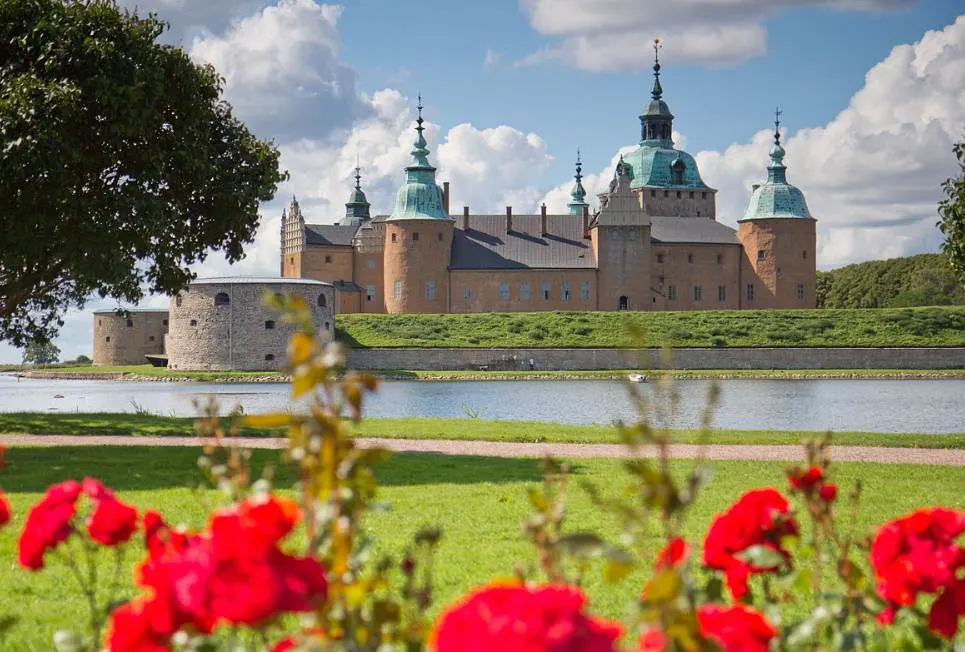Renaissance architecture emerged in the city of Florence in the 14th century and quickly spread all across Italy. It subsequently spread across Europe and was a dominant architectural style in Spain, France, Germany, England, and even Russia.
The stylistic approach of Renaissance architecture was derived from the Gothic Cathedrals that were built all across Europe during the Middle Ages. Its dominance faded in the 16th century when it was replaced with much more exuberant Baroque architecture.
Just like the Renaissance in the visual arts, this type of architecture put a high emphasis on symmetry, geometry, and the sense of proportion that was used in classical architecture. In that sense, it was a lot soberer than the Gothic architectural style it followed, and especially the Baroque style that replaced it.
Let’s take a closer look at some of the most famous Renaissance buildings in history so you can get an idea of what this architectural style looks like.
1. Florence Cathedral
Florence Cathedral is officially known as the “Cattedrale di Santa Maria del Fiore” and is the most prominent landmark in Florence, the city that is considered to be the birthplace of the Renaissance.
Although it features elements of Gothic architecture with construction starting as early as 1296, the incredible dome engineered by Filippo Brunelleschi (1377-1446) is its most remarkable structural feature.
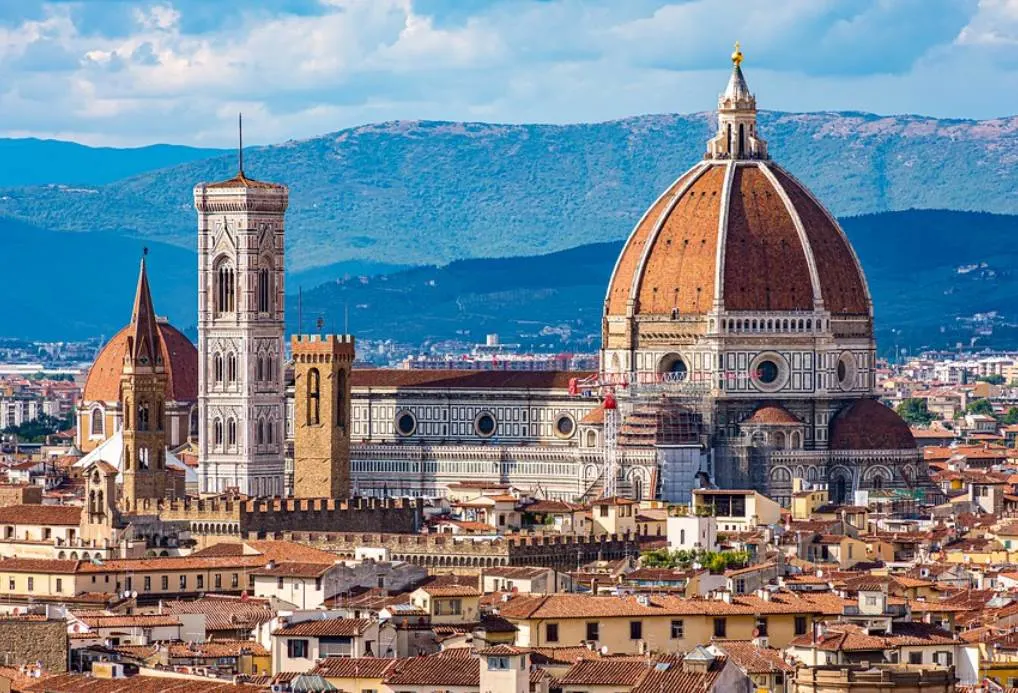
2. Tempietto
The Tempietto is as the name implies a “Little Temple” located in the courtyard of the San Pietro in Montorio church in Rome. It was built on the presumed location where Saint Peter was martyred during the persecution of Christians by Nero.
It’s one of the most famous works by Donato Bramante and is often referred to as one of the “most harmonious buildings of the Renaissance.” Completed in the early 16th century, it’s also one of the most influential buildings of the High Renaissance.
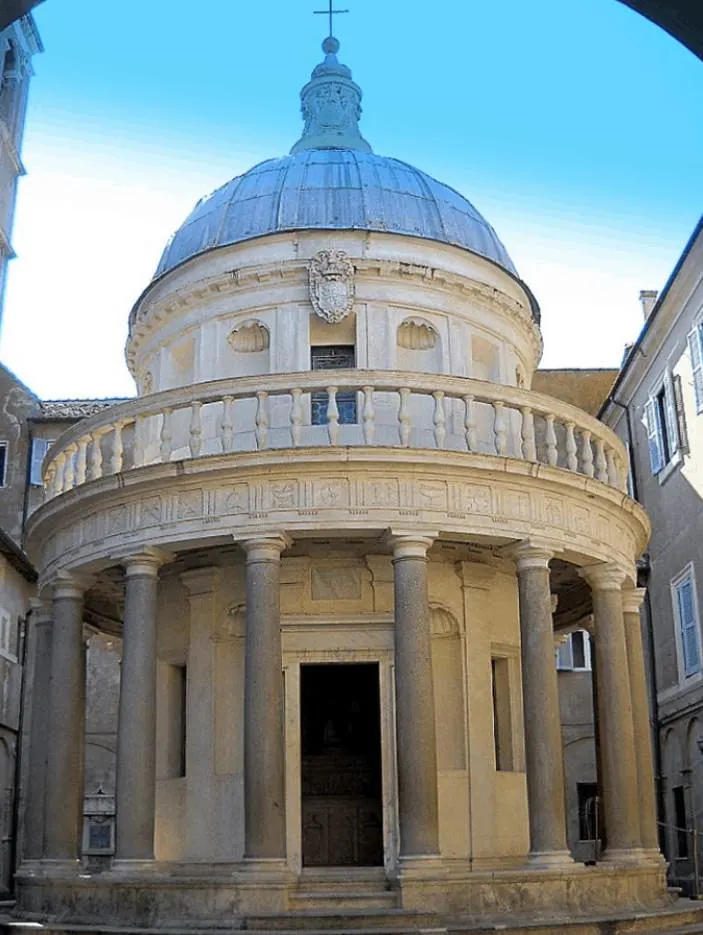
3. St Peter’s Basilica
St. Peter’s Basilica is not only the largest church in the world but also one of the most amazing examples of Renaissance buildings. When we look at the Tempietto, it’s not surprising that the first architect of the incredible church was Donato Bramante (1444-1514) as well.

The dome of this incredible structure resembles that of Bramante’s little temple and would become the inspiration for countless famous domes built all around the world.
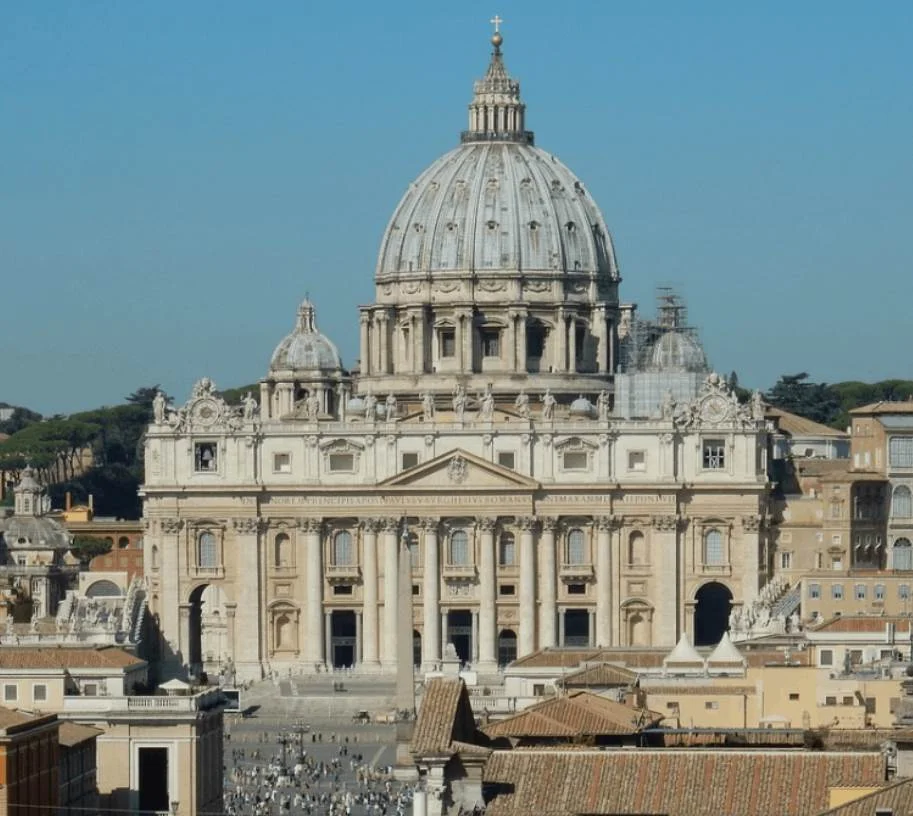
4. Ospedale degli Innocenti
Ospedale degli Innocenti translates to “Hospital of the Innocents” and is another Renaissance masterpiece designed by Filippo Brunelleschi. The building was commissioned in 1419, the early phase of the Renaissance.
The arched loggia was one of the first of its kind in Italy, setting the tone for future Renaissance buildings in Florence and beyond. Brunelleschi studied classical buildings to develop the remarkable Renaissance architectural style seen in this building.
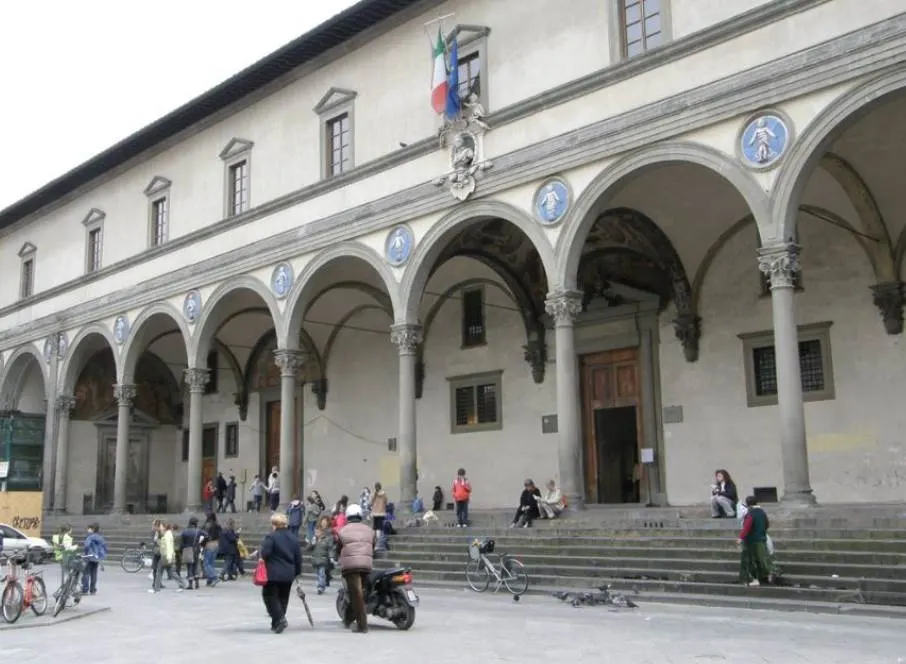
5. Château de Chambord
The Château de Chambord was built between 1519 and 1547 and is one of the prime examples of the French Renaissance architectural style. It’s the biggest château in the Loire Valley and one of the best-recognizable and famous castles in Europe.
Regardless of the amazing architectural design of this structure, it hasn’t been used a lot throughout its history. King Francis I barely spent 7 weeks here and it was mostly used as an over-the-top hunting lodge. Today, it’s one of the most popular tourist attractions in the region.
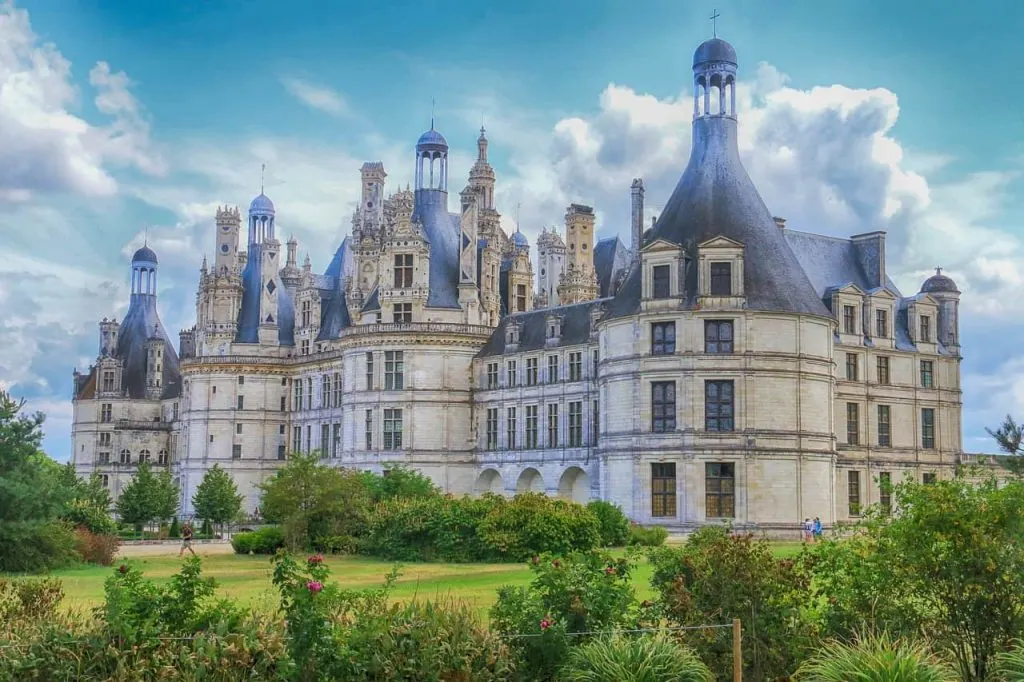
6. Santa Maria delle Grazie
Santa Maria delle Grazie is a famous church in Milan and although it’s world-famous for housing the Last Supper Painting by Leonardo da Vinci in the refectory of its convent, it also features a remarkable architectural design.
Although the nave was constructed in the Gothic style between 1463 and 1469, the apse and dome were built during the reign of Duke Ludovico Sforza in the late 15th century. The apse and dome were built in the Renaissance architectural style and Bramante might have had a hand in this structure as well.
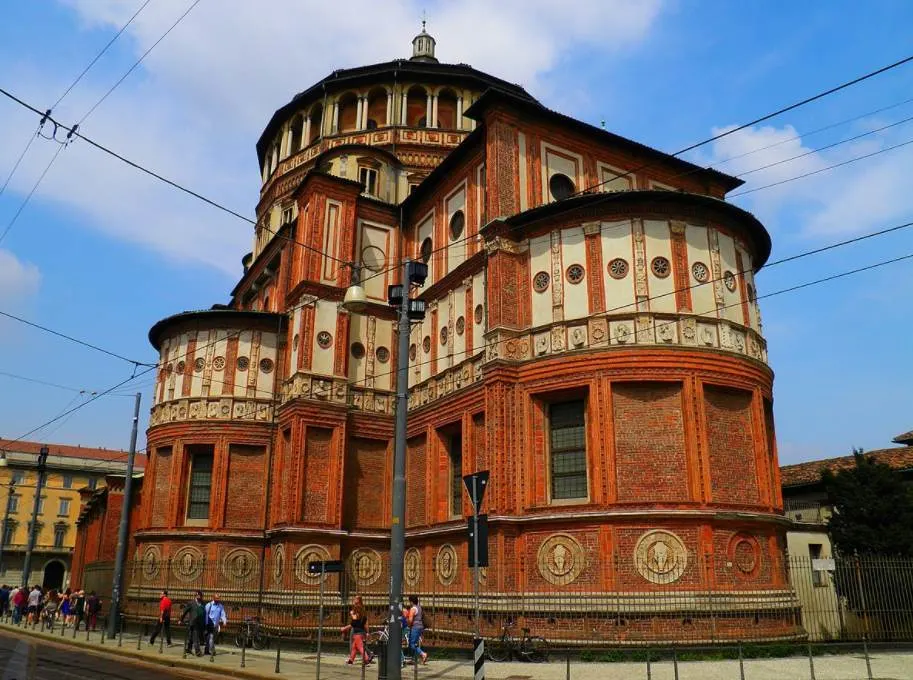
7. Pitti Palace
The Pitti Palace isn’t just one of the most famous palaces in the world, but also one of the most remarkable examples of Renaissance architecture. It’s located just south of the River Arno and can be reached by crossing the iconic Ponte Vecchio.
It was originally built by Florentine banker Lucca Pitti but was acquired by the powerful Medici family in 1548. It features distinctive rusticated stonework and today houses part of the collection of the Uffizi Gallery, one of the most famous museums in the world.
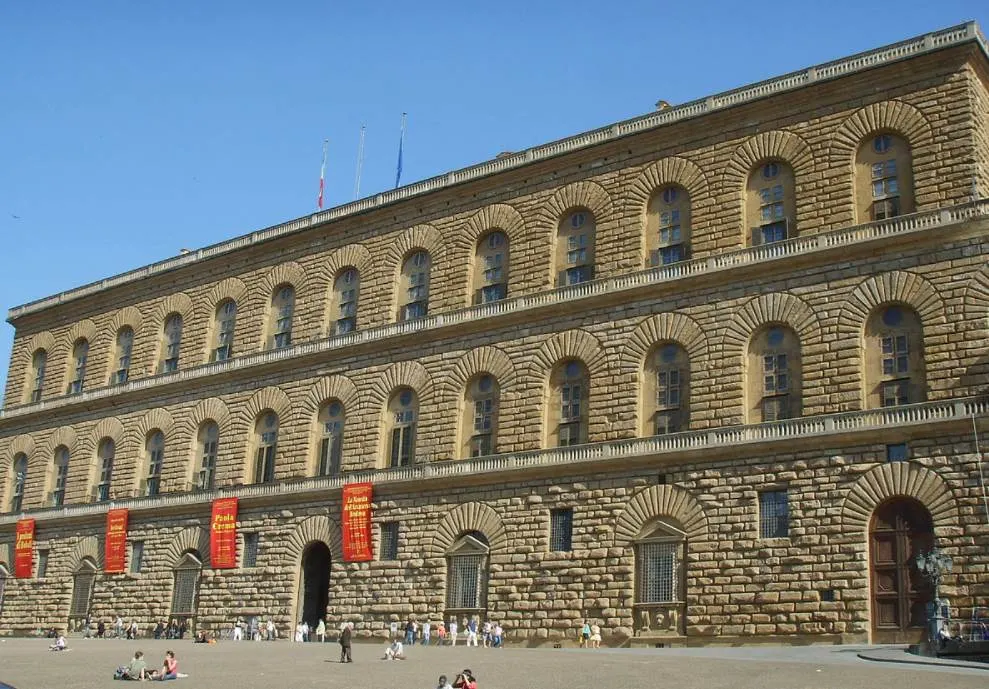
8. Palazzo Farnese
Palazzo Farnese is one of the most prominent Renaissance buildings in Rome, mainly because it was built during the High Renaissance and involved multiple renowned architects of this period in history.
It was built by the Farnese family in the early 16th century and seriously expanded when Alessandro Farnese became Pope Paul III in 1534. It’s believed that Michelangelo was involved in the design of this expansion project as he is credited with completing the third floor.
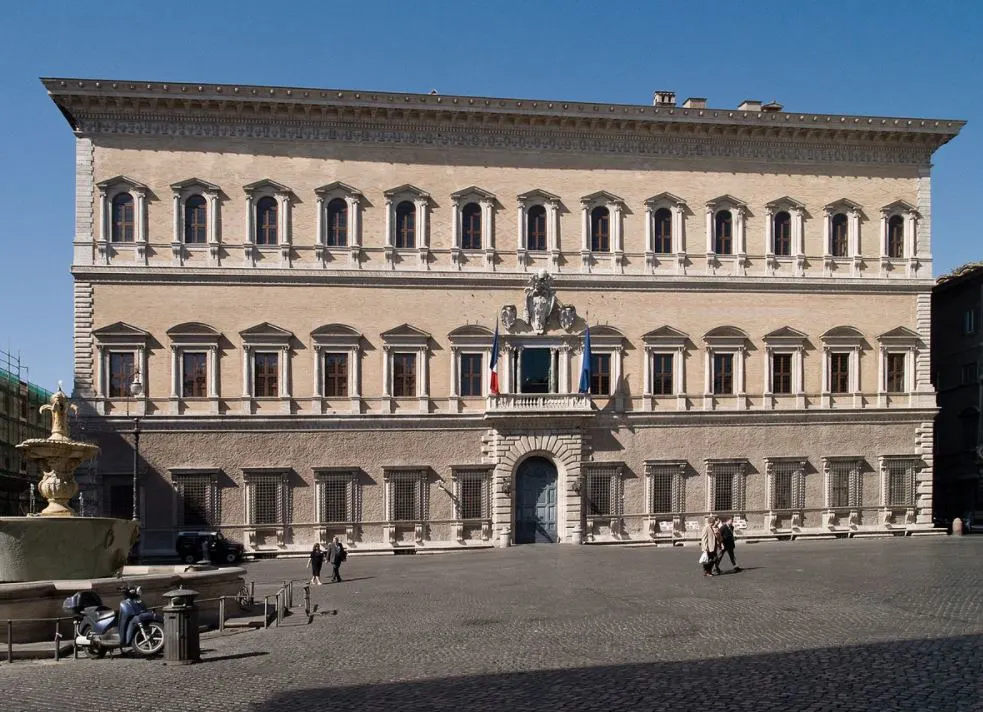
9. Basilica di San Lorenzo
The Basilica di San Lorenzo or “Basilica of Saint Lawrence” is another church in Florence that was originally designed by the founding father of Renaissance architecture, Filippo Brunelleschi. The main structure was completed between 1419 and 1470.
The use of columns and arches inside the church are considered to be some of the most revolutionary elements of Renaissance architecture of the 15th century and were based on classical models of symmetry and proportions, making this a very influential structure.
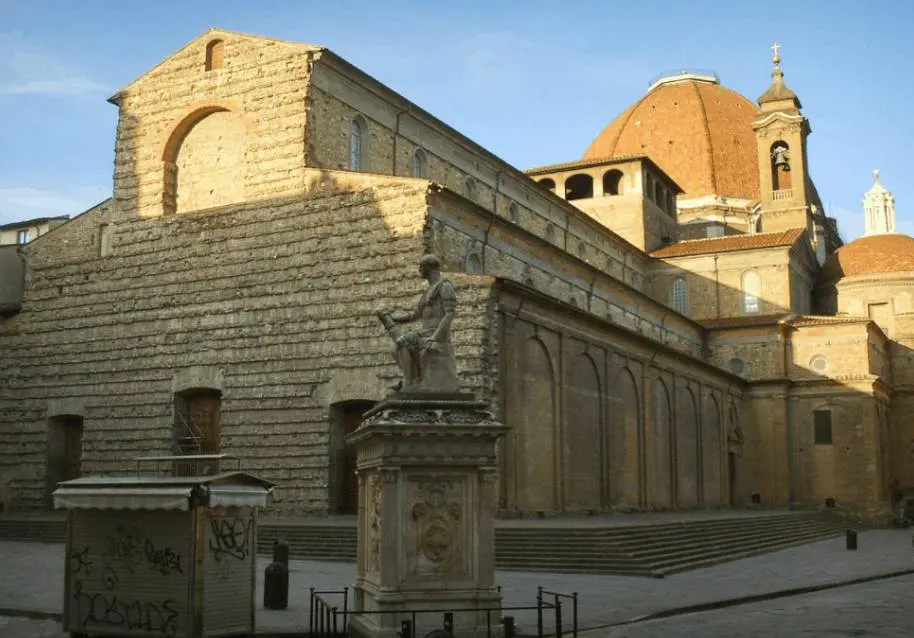
10. Sistine Chapel
The Sistine Chapel is a chapel in the Apostolic Palace in Vatican City and is world-famous for the incredible artworks that decorate its interior. Some of these include the creation of Adam and the Last Judgement by Michelangelo.
The structure itself is a typical Renaissance building as it doesn’t feature any external decorations, a sheer contrast to the immense beauty of the artworks inside. It was built between 1473 and 1481, just before the most famous artists of the High Renaissance moved to Rome.
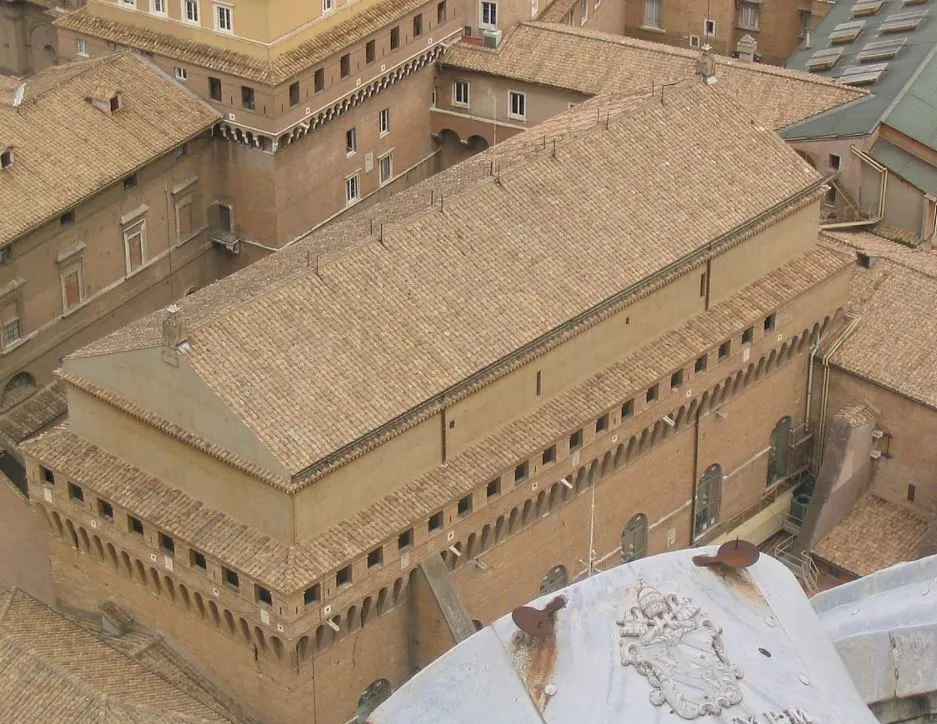
11. Château de Fontainebleau
The Château de Fontainebleau is also sometimes referred to as the Palace of Fontainebleau and is one of the largest royal residences in France. It’s located just southwest of Paris and served as the royal residence of french Monarchs from the 12th century to the 19th century, from Louis VII to Napoleon III.
The immense structure was initially built during the Middle Ages and was completely transformed into a Renaissance palace during the reign of King Francis I in the 16th century. It’s therefore said that the Renaissance was introduced to France at Fontainebleau.
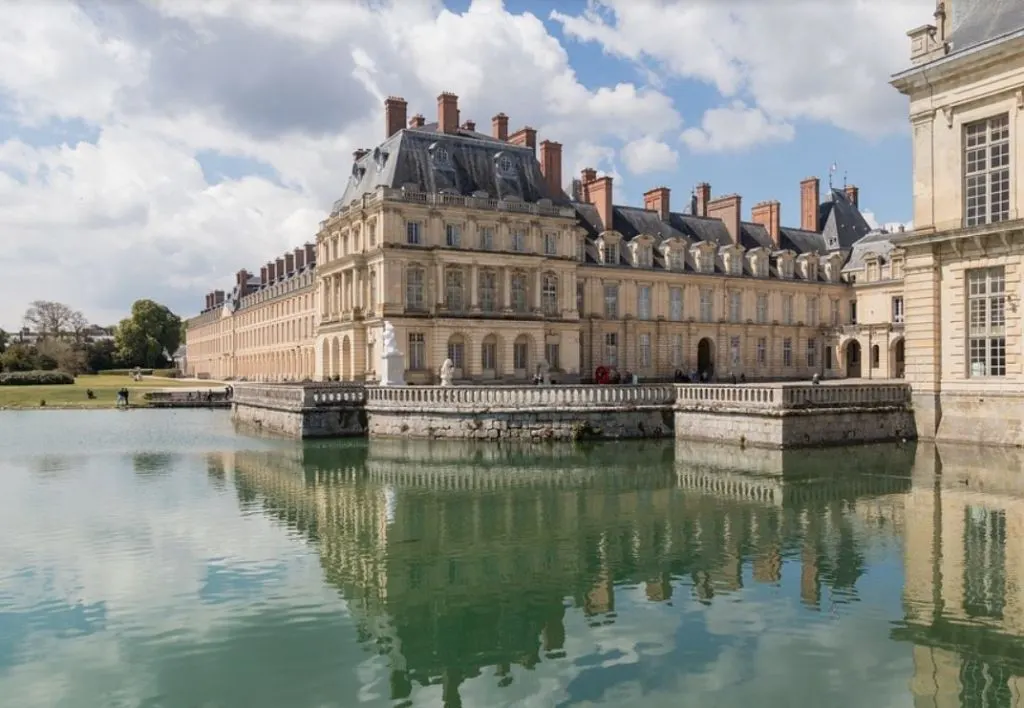
12. Villa Capra
Villa Capra is also sometimes referred to as “Villa La Rotonda” and is officially known as Villa Almerico Capra Valmarana. It’s one of the most famous Renaissance buildings ever constructed and was designed by Andrea Palladio, a man considered to be the most influential Renaissance architect in history.
It’s located near the city of Vicenza in the Veneto region and is one of the UNESCO World Heritage sites known as “The Palladian Villas of the Veneto.” Although it’s one of the most influential buildings of the Renaissance, its design features 4 identical façades and a central dome that were inspired by the Pantheon in Rome.
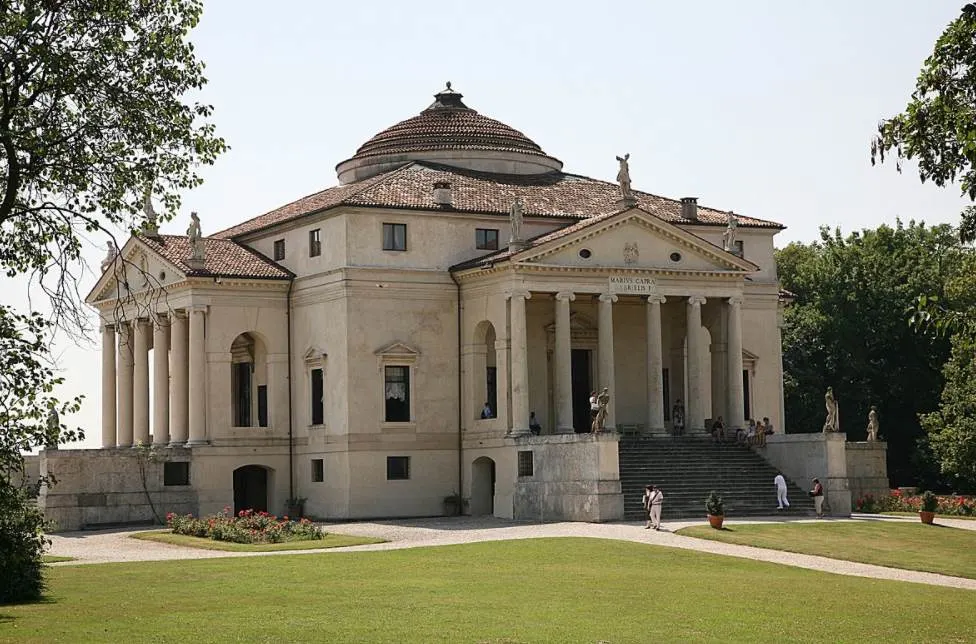
13. Palace of Charles V
The Palace of Charles V can be described as the epitome of Renaissance architecture in Granada. It’s located within the much larger Alhambra complex in the southern Spanish city.
The palace was commissioned by Holy Roman Emperor Charles V (1500-1558) who intended to make it his seat in this part of his empire. The building, which features a remarkable circular courtyard, was never completed and no monarch ever lived here.
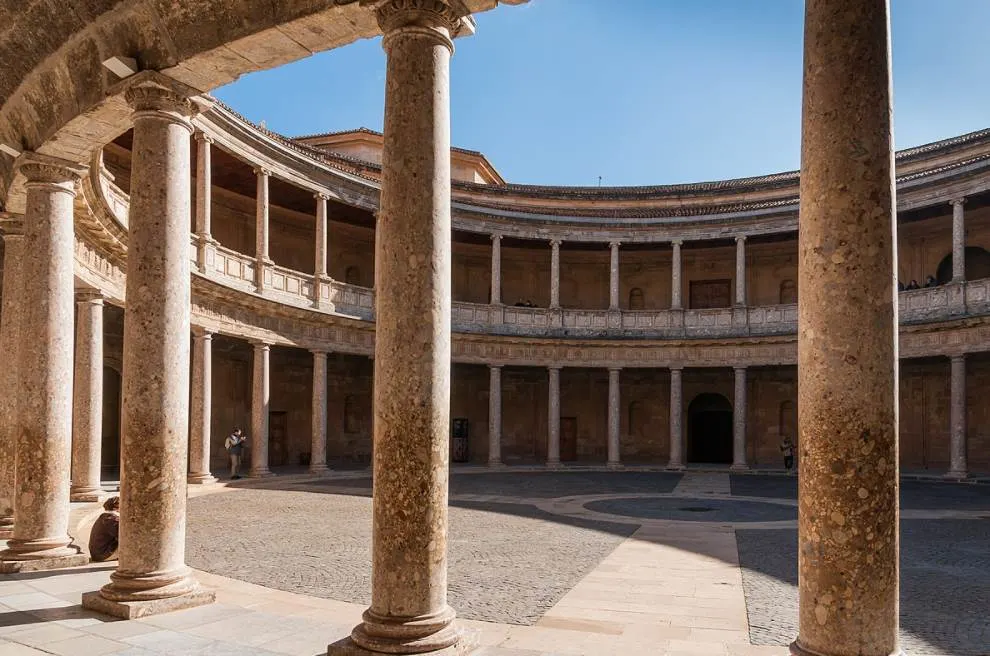
14. Basilica di Santo Spirito
The Basilica di Santo Spirito is another intriguing Renaissance building located in Florence, Italy. It’s another church that was designed by Filippo Brunelleschi, and although he never saw the building completed, the plan was closely followed by his pupils who took over after his death.
The church was completed between 1444 and 1487 and is located just south of the Arno River. It was built on the location of an earlier structure that was damaged by fire, and is home to a sculpture by Michelangelo called “Crucifix.”
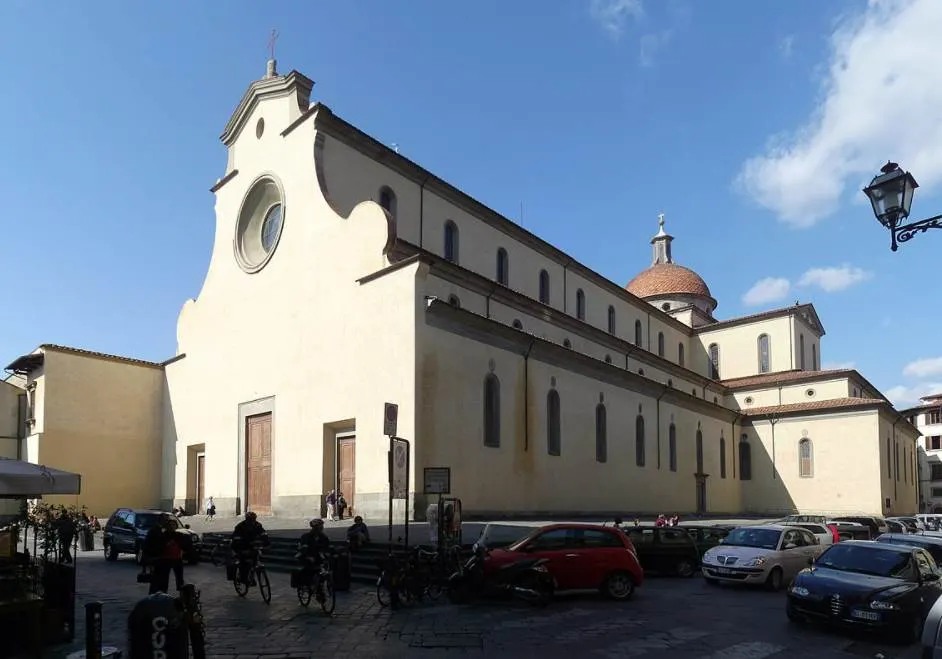
15. Villa Madama
Villa Madama is a mansion located in the northwestern part of Rome. It was commissioned by Cardinal Giulio de’ Medici, a man who became Pope Clement VII and a member of the rich and powerful Medici family.
The building was designed by Renaissance artist Raphael (1483-1518). He didn’t live to see the building completed in 1525 because he passed away 5 years earlier, but his plan was continued by his colleague Antonio da Sangallo the Younger. It became one of the most influential buildings of the High Renaissance.
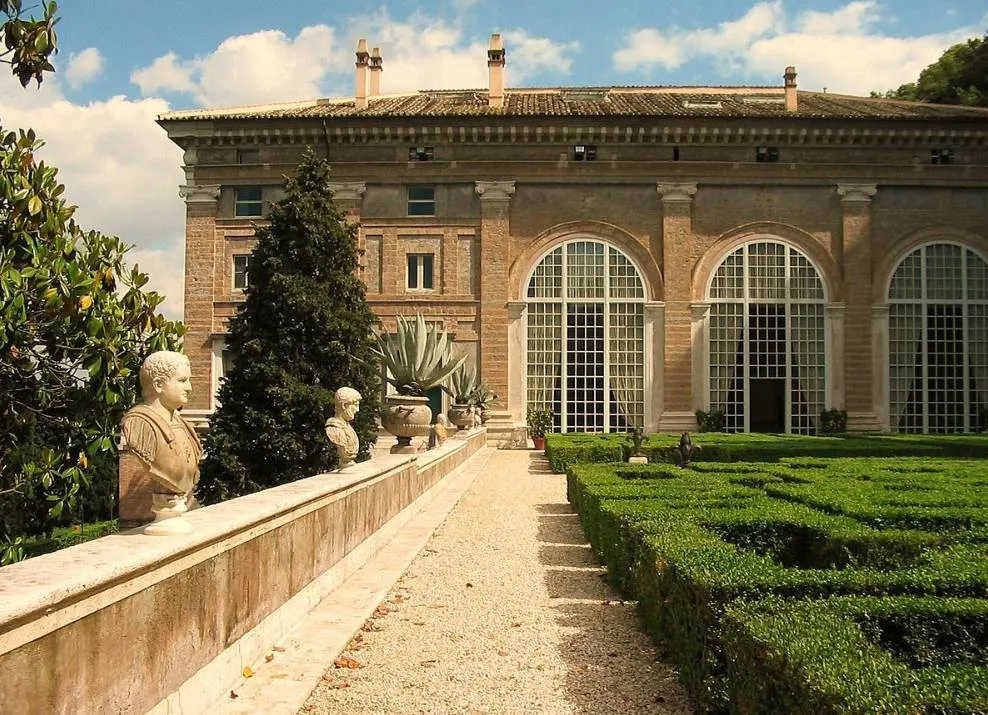
16. Antwerp City Hall
Antwerp City Hall is one of the architectural highlights in Antwerp, the second-largest city in Belgium and a major port city in Europe. The fact that Antwerp is a port city is important in the building’s history because it was constructed in the 16th century to emphasize the city’s wealth.
The building incorporated both Flemish and Italian Renaissance elements and has been one of the most influential buildings in Northern Europe since its completion in the 1560s. It’s hard to deny the fact that this is one of the most stunning civic buildings in the world.
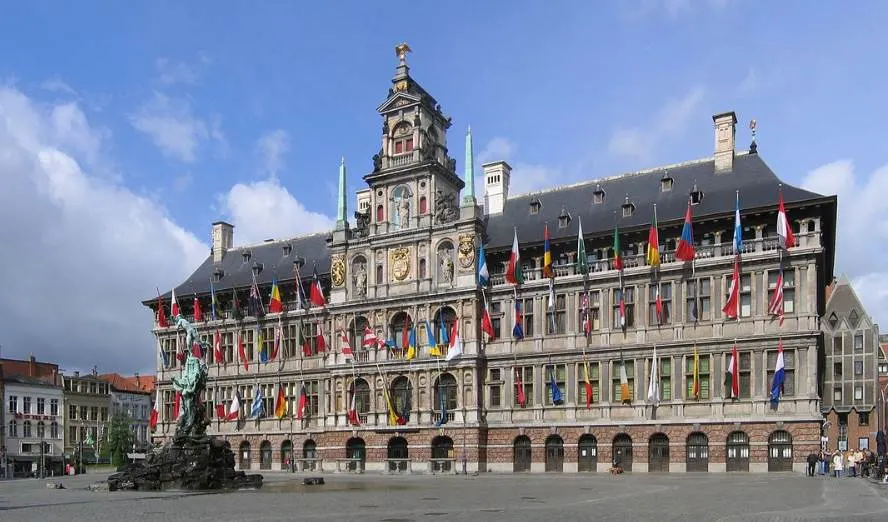
17. Kalmar Castle
Kalmar Castle is one of the most stunning examples of Renaissance architecture in northern Europe. It was initially constructed as a medieval fortification in the 12th century but was transformed into a Renaissance-style castle in the 16th century.
This amazing building in Sweden was severely damaged during several sieges, especially the 3-month siege that took place during the Kalmar War in 1611. It was restored during the 19th and 20th centuries and now looks exactly how it did during its glory days in the 16th century.
